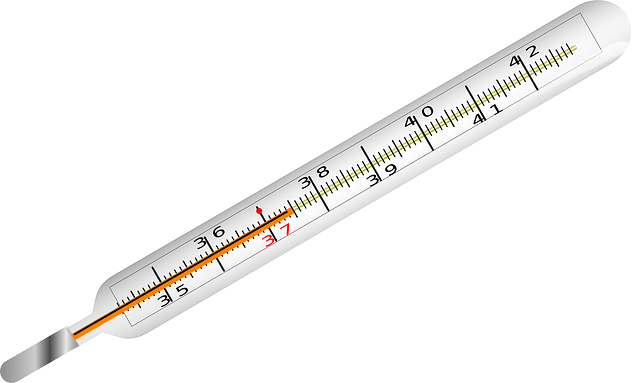With autumn settling in, you’ve probably started to wonder about how to handle the upcoming seasonal bout of cold and flu bugs that affect communities each year around this time. This is a particularly important line of thought for parents, who have to make the decision about whether or not to allow their children to stay home from school when they begin to develop symptoms.
 For parents, deciding whether or not to excuse their child from school due to illness is often a balancing act that involves weighing the severity of a child’s symptoms against the necessity of their attending school. It can be hard to tell if a child would be better off staying in bed for a day or two, or even if their symptoms are still contagious - which could make their classmates sick, too.
For parents, deciding whether or not to excuse their child from school due to illness is often a balancing act that involves weighing the severity of a child’s symptoms against the necessity of their attending school. It can be hard to tell if a child would be better off staying in bed for a day or two, or even if their symptoms are still contagious - which could make their classmates sick, too.
Contagious Bugs: 3 Illnesses Your Child May Catch At School
Unfortunately for our children, schools often make it all too easy for contagious bugs and germs to spread and hop from student to student. There are three particularly common bugs to watch out for if your children spend their day in a school:
- The Common Cold: The common cold is a viral condition that affects the upper respiratory tract. And it’s definitely common: colds are the main reason that students miss school. Cold germs are highly contagious - breathing air that’s been contaminated by someone who’s coughing or sneezing, or touching an item like a pen or toy that has been contaminated, is all it takes to spread the common cold from child to child.
- The Flu: The flu - which is caused by the influenza virus - affects the upper and lower respiratory tracts. Like the cold, flu viruses spread via direct contact and water droplets in the air. However, this disease is more serious, and often lasts longer, than a cold. In fact, complications from the flu can be extremely serious, which is why preventative action is so important in managing this illness.
- Strep Throat: This bacterial infection affects the throat and tonsils, which leads to a sore throat that creates pain when swallowing or breathing. Other side effects of this infection include a fever, headache, stomach pain, swollen tonsils, and white or yellow spots in a child’s throat. Just like the cold and flu, strep passes from person to person through water droplets in the air. The bacterium can also live briefly on doorknobs, faucet handles, and other surfaces that children often come into contact with.
Stop The Spread: How To Help Children Stay Healthy
While there’s no way to make our lives 100% germ-free, there are things we can do to minimize our exposure to them. To help your children avoid illnesses at school, we recommend encouraging them to make a habit out of these four behaviors:
- Washing Their Hands: Regularly washing our hands is the best way to prevent the spread of germs. Children should always be reminded to wash their hands with soap and hot water after using the restroom, after gym and recess, and before eating lunch or a snack will go a long way in preventing the spread of contagious diseases. (Encourage your children to use regular soap when they do this, as antibacterial soap may not work as effectively against cold and flu viruses.)
- Avoiding Contact With The Face And Eyes: Children should avoid touching their face or rubbing their eyes or nose whenever possible, as these are great routes for viruses to get into our bodies. They should also be encouraged to stand away from classmates who look or sound sick whenever possible.
- Follow Proper Coughing/Sneezing Etiquette: All children should be instructed to cough or sneeze into their hands (and to wash their hands immediately after doing so) so that their germs do not enter the air and infect others. You can also encourage children to cough or sneeze into their arm or elbow, rather than their hands, to minimize the spread of germs.
- Get Their Shots: Vaccinations help to prevent the development of symptoms even if a child is exposed to the germs they’re vaccinated against. Vaccinations will also make symptoms less severe in the event that the shot isn’t 100% effective.
Sick Days: What To Do If Your Child Gets Sick
Even the best habits can’t always keep us from getting sick. While missing a day of school is inconvenient for both you and your child, when children begin to get sick it’s best to keep them home from school. This allows your child to rest and will prevent their illness from spreading to their classmates. It’s particularly important to keep a child home if they:
- Develop a fever above 100 degrees F.
- Experience more than one episode of vomiting or diarrhea
- Have an unexplained rash, red eyes, a runny nose or a severe cough
Until these symptoms have subsided and been kept under control for at least 24 hours, a child should not go to school.
And while we can’t predict exactly when a child will get sick, there are still things that parents can do to prepare for this. For example, if you work full-time, it helps to try and plan for possible sick days with your employer. However, if your schedule isn’t flexible enough to let you stay home with your child if they fall ill suddenly, be sure to have a back-up plan. Talk to family members or local care providers who could watch your child for a day, so you can arrange care at the last minute if it’s needed. It’s also important to keep your supply closet stocked with medicine for headaches, sore throats and fevers - that way there’s no last-minute dash to the store when your child needs relief from their symptoms.
While illnesses can potentially be disruptive during the fall and winter months, with a little planning and the encouragement of healthy habits these seasons can be enjoyed to the fullest - and your children will miss a minimal number of classes. We encourage all parents to follow the tips listed here to help keep their children healthy and happy, and we also invite any parents with questions or concerns to call our offices to discuss your child’s individual needs.

